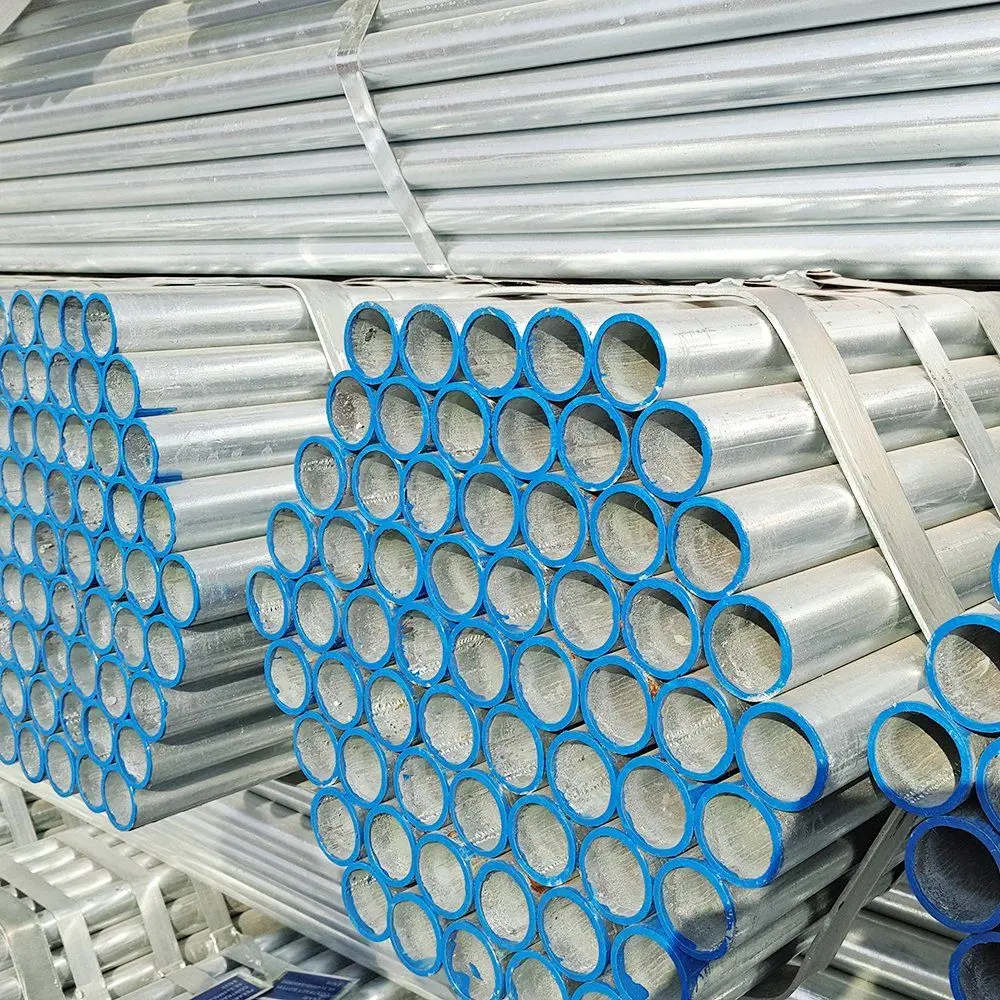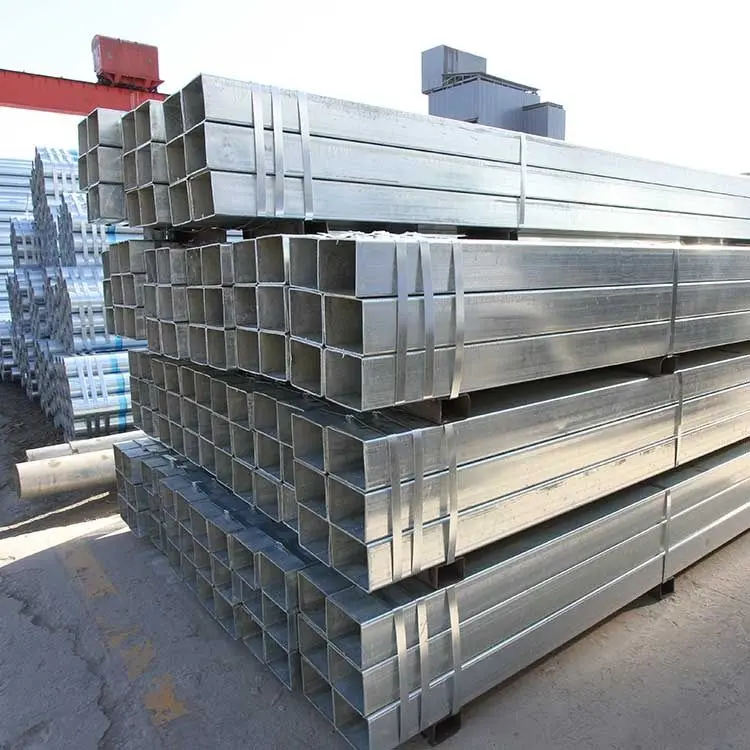What is galvanized steel pipe (GI pipe)?
Galvanized steel pipe is a Steel Pipe that is coated with a layer ofhot-dip galvanizing or electro-galvanizing on the surface of welded steel pipe. Galvanizing can increase the corrosion resistance of steel pipes and extend their service life. Galvanized pipes are widely used. In addition to being used as pipeLine Pipes for conveying water, gas, oil and other general low-pressure fluids, they are also used as oil well pipes and oil pipelines in the petroleum industry, especially offshore oil fields, oil heaters, condensing coolers, coal distillation and washing oil exchangers for chemical coking equipment, andtrestle pipe piles and support frames in mine tunnels.


Types of galvanizing processes for hot and cold water pipes
Hot-dip galvanizing
To make galvanized steel pipes, steel materials are placed in a molten zinc bath at 450 degrees Fahrenheit. This process is also called hot-dip galvanizing. In this process, the two metals are chemically bonded to each other so that they never separate, resulting in a more corrosion-resistant and longer-lasting steel. Hot-dip galvanizing is currently considered one of the best methods for galvanizing steel pipes due to its durability and corrosion resistance.
Electroplating
Electroplating is another popular method for galvanizing steel pipes due to its high-quality gloss and relatively cheap cost compared to other methods such as hot-dip galvanizing. Electroplating is the use of an electric current to deposit a thin layer of chromium, nickel or zinc on an existing metal surface. Cold galvanizing is electroplating of zinc. The amount of zinc applied is very small, only 10-50g/m², and its corrosion resistance is much worse than that of hot-dip galvanized pipes.
Mechanical plating
Mechanical plating, also known as mechanical finishing, is a low-cost alternative method that involves adding a thin layer of zinc using a sandblasting (shot peening) method. This type of galvanizing process is less popular because it is of lower quality and tends to flake off.
Key Features of Galvanized Steel Pipes
-
Corrosion Resistance: The zinc coating acts as a barrier against moisture and oxidation.
-
Long Service Life: Properly galvanized pipes can last for decades, even in harsh environments.
-
Versatility: Suitable for transporting water, gas, oil, and structural applications.
-
High Strength: Maintains the structural integrity of steel while adding corrosion protection.
Primary Applications of Galvanized Steel Pipes
Galvanized pipes are used across multiple industries due to their robustness and resistance to environmental damage.
1. Water and Gas Supply Systems
-
Used in plumbing, water distribution, and gas pipelines due to their rust-resistant properties.
-
Common in municipal water systems and residential plumbing (though being replaced by PVC and copper in some cases).
2. Oil and Petroleum Industry
-
Functions as oil well casings, oil pipelines, and refinery tubing, especially in offshore drilling where corrosion resistance is crucial.
-
Used in heat exchangers, condensers, and distillation equipment in chemical processing plants.
3. Construction and Infrastructure
-
Serves as scaffolding, structural supports, and fencing due to its strength.
-
Used in bridge construction, trestle pipe piles, and underground mining support systems.
4. Agricultural and Industrial Uses
-
Employed in irrigation systems, greenhouse structures, and machinery parts.
-
Used for chemical transportation where corrosion resistance is essential.
Types of Galvanizing Processes for Steel Pipes
The method of galvanization affects the pipe’s durability, cost, and suitability for different environments.
1. Hot-Dip Galvanizing (HDG)
-
Process: Steel is submerged in molten zinc at 450°F (232°C), forming a thick, bonded zinc-iron alloy layer.
-
Advantages:
-
Provides superior corrosion resistance (zinc coating thickness: 50-150 µm).
-
Long-lasting, making it ideal for outdoor and industrial use.
-
Self-healing property: Minor scratches are protected by surrounding zinc.
-
-
Disadvantages:
-
Higher initial cost compared to electroplating.
-
Surface may be less smooth than electroplated pipes.
-
2. Electro-Galvanizing (Cold Galvanizing)
-
Process: Uses electroplating to apply a thin zinc layer (typically 10-50g/m²) via an electric current.
-
Advantages:
-
Smoother, more aesthetically pleasing finish.
-
Cheaper than hot-dip galvanizing.
-
-
Disadvantages:
-
Lower corrosion resistance (not suitable for harsh environments).
-
Thinner coating wears off faster, leading to potential rusting.
-
3. Mechanical Plating (Peen Galvanizing)
-
Process: Zinc is applied via tumbling or shot peening, creating a thin, uneven layer.
-
Advantages:
-
Low-cost alternative for small parts.
-
No hydrogen embrittlement risk (unlike electroplating).
-
-
Disadvantages:
-
Poor adhesion, prone to flaking.
-
Not suitable for high-stress or outdoor applications.
-
Comparison of Galvanizing Methods
| Method | Coating Thickness | Durability | Cost | Best For |
|---|---|---|---|---|
| Hot-Dip Galvanizing | 50-150 µm | Very High | Moderate-High | Outdoor, industrial, oil/gas |
| Electro-Galvanizing | 3-15 µm | Moderate | Low-Moderate | Indoor, decorative uses |
| Mechanical Plating | 5-20 µm | Low | Low | Small components, low-budget projects |
Galvanized steel pipe is a welded steel pipe with hot-dip or electroplated zinc layer on the surface. Galvanizing can increase the corrosion resistance of steel pipes and extend their service life. Galvanized pipes are widely used. In addition to being used as pipeline pipes for general low-pressure fluids such as water, gas, and oil, they are also used as oil well pipes and oil pipelines in the petroleum industry, especially offshore oil fields, oil heaters, condenser coolers, coal distillation and washing oil exchangers for chemical coking equipment, and pier piles and support frames for mine tunnels.















